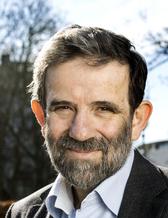Governments around the world are trying to find new ways to calculate the value of our ecosystems; what are the consequences of losing them and what are the benefits of preserving them. Professor Thomas Sterner, environmental economist at the University of Gothenburg, is part of an international research team that has found a new way to calculate nature and environmental values, which is published in the journal Science today.

Nature has many values for us humans. It filters air and water, pollinates crops and is a place we use for relaxation. These ecosystem services are taken into account by decision-makers in cost-benefit calculations. The need to integrate biodiversity values into planning processes was agreed at the 10th Conference of the Convention on Biological Diversity in Japan in 2010.
However, the current calculation model does not take into account the fact that people are getting richer and the material supply is increasing, while the natural and environmental values of ecosystems are not increasing. A major international collaboration is therefore presenting an updated calculation model that calculates natural and environmental values from year to year.
Thomas Sterner, Professor of Environmental Economics at the School of Business, Economics and Law at the University of Gothenburg, is part of the research team and has been studying the issue for almost 20 years.
"Coral reefs and key biotopes are not increasing but decreasing in number, so they should be revalued. We will have more phones and gadgets in the future - so they are not as valuable, but we will not have more ecosystem services in the future", he says.
The research team's update of the relative price of ecosystem services takes into account that the income of the world's population increases by about 2% each year. As income rises, people are inclined to pay more to preserve nature and its increasingly scarce resources. The value of ecosystem services therefore needs to be set much higher in current cost-benefit analyses.
There are two reasons for this: firstly, rising incomes and thus increased willingness to pay even for natural resources that are not growing in total extent. And secondly, additional price increases for those resources that disappear or become scarcer. According to the newly developed formula, values rise by more than 130% if only the increase in income over the next 100 years is taken into account. The value adjustment for shrinking ecosystems is even higher.
This adjustment to the relative price of ecosystem services will give policy makers better tools to evaluate the current and future consequences of their decisions, which can have a significant impact on ecosystems and biodiversity.

Thomas Sterner gives the example of the construction of a new road, which is estimated to be worth SEK 40 million if a fatal accident is avoided.
"This figure is usually calculated at regular intervals as we earn more and more every year. We believe that the value of a wetland or seagrass bed should be calculated in the same way, perhaps even more if the ecosystem is disappearing."
The research team, which includes Thomas Sterner, is led by Moritz Drupp from the University of Hamburg and includes researchers from Germany, the UK, France, Denmark, the Netherlands, Norway and the US.
Text: Jessica Oscarsson






